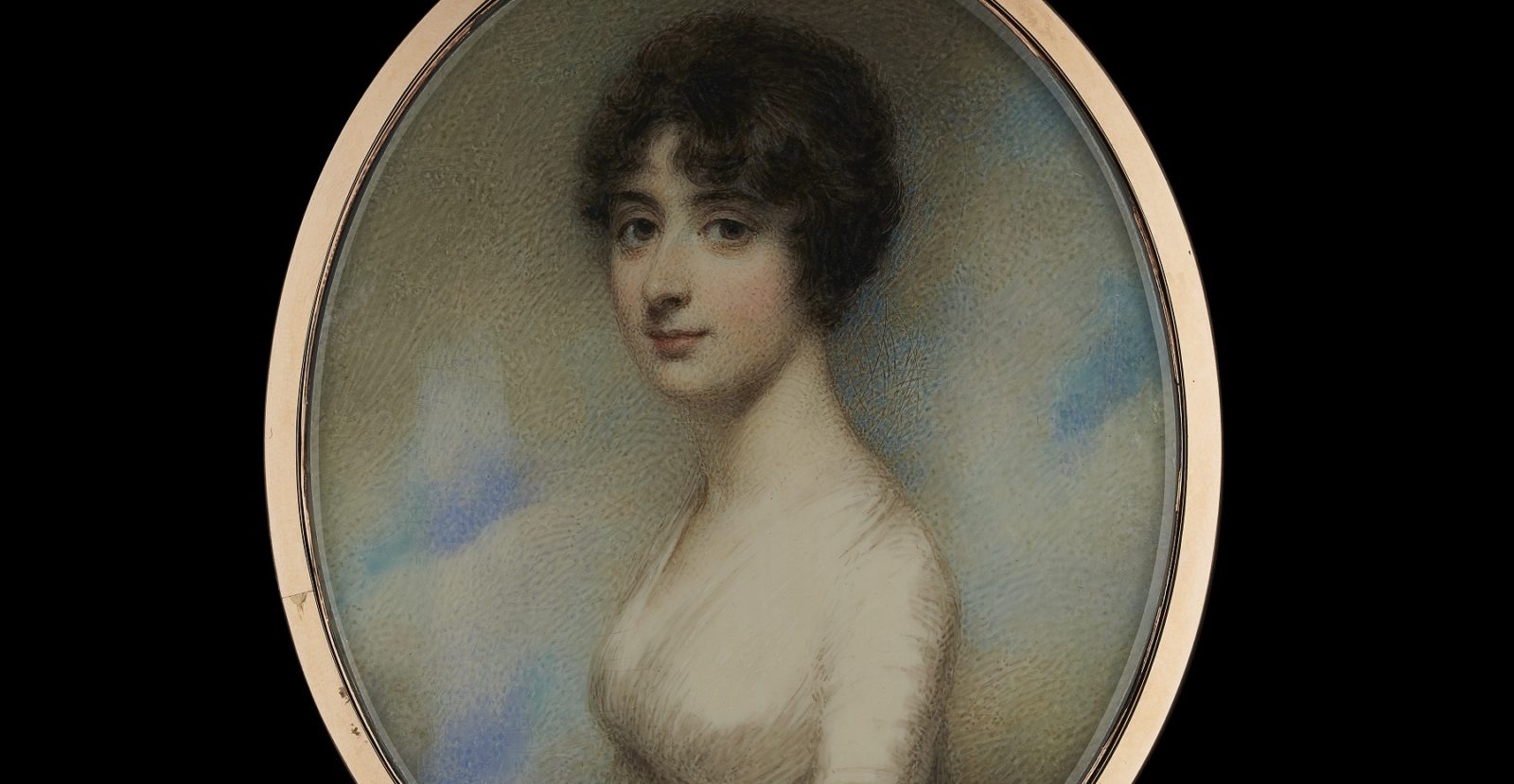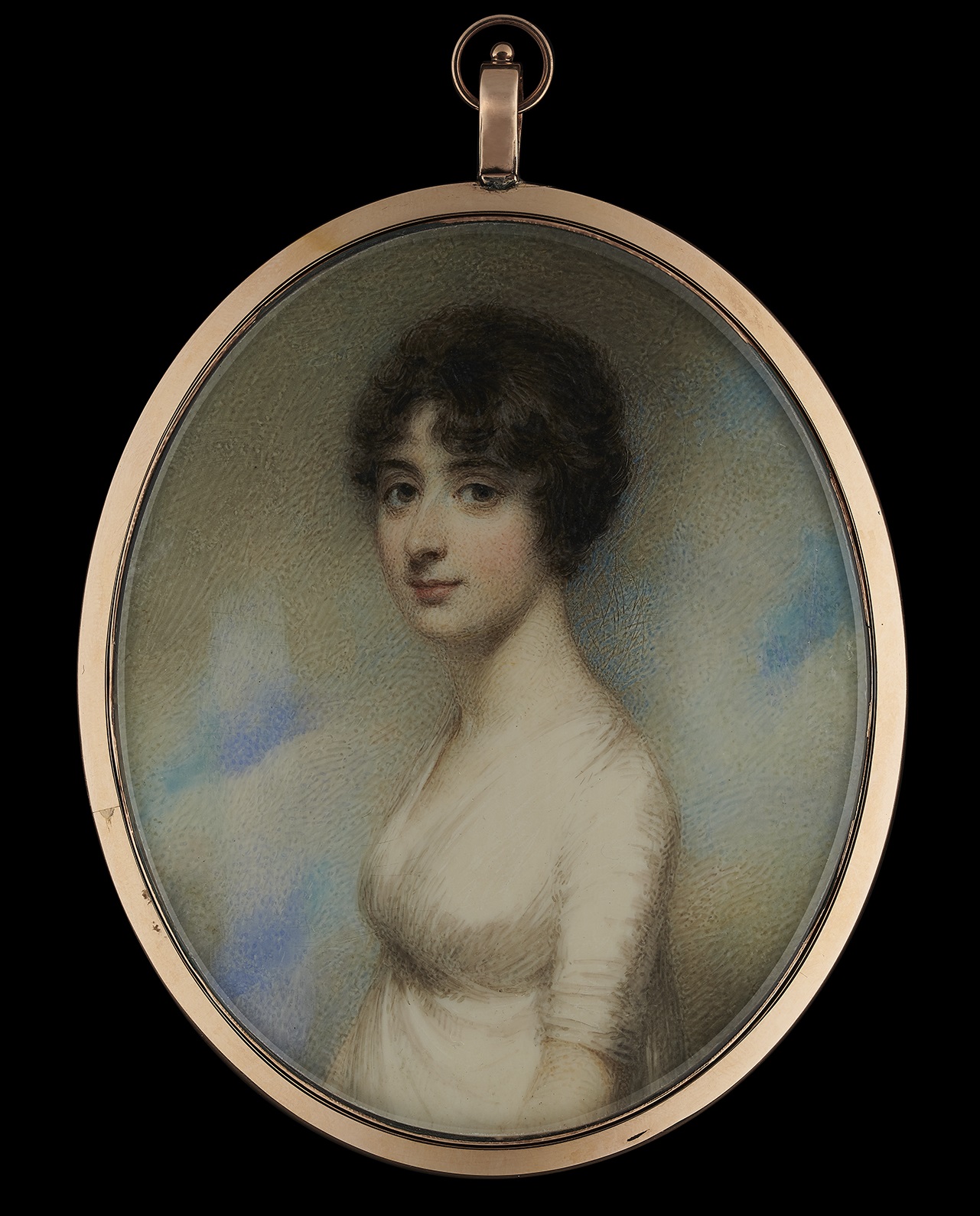Portrait miniature of Mary Pearson
Object name: Portrait miniature of Mary Pearson, by William Wood
Object number: CHWJA:JAH437
Category: Objects
Description: Portrait miniature of Miss Mary Pearson, a young lady wearing white muslin dress, her dark brown hair curled and upswept. The painting is by William Wood (1769-1810). Watercolour on ivory; oval, measuring 3 ½ in (91mm) high. It is in a gold frame, with plaited hair on the reverse.
Made: c. 1798
Context: Mary Pearson was the daughter of the distinguished naval officer Sir Richard Pearson and his wife Margaret. In the summer of 1796 she met Jane’s brother Henry Austen at Rowling in Kent (where Jane’s brother Edward Austen lived), and the pair became engaged to be married.
On Friday 16 September 1796, Jane wrote home to Cassandra:
‘If Miss Pearson should return with me, pray be careful not to expect too much Beauty. I will not pretend to say that on a first view she quite answered the opinion I had formed of her.—My Mother I am sure will be disappointed, if she does not take care. From what I remember of her picture, it is no great resemblance.’
It is probable that Jane refers to a portrait miniature in her letter, as these personal, portable portraits were considered to be the most faithful portrayals.
The engagement between Henry and Mary was short-lived, and soon afterwards Henry became engaged to his cousin, the widowed Eliza Hancock, whom he married the following year. Eliza also had plenty to say on Mary’s appearance, commenting; ‘She is a pretty wicked looking girl, with bright black eyes which pierce through and through’.
Jane continued to stay in touch with Mary up until 1799, but in 1807, when Mary was living with her sisters in Southampton, Jane described their home as ‘the only Family in the place we cannot visit’. This portrait miniature, dated 1798, probably marks Mary’s tentative foray back into society. This cannot have been easy after an aborted engagement, and in fact Mary did not marry until 1815.
Credit: This artwork was acquired in March 2020 with support from the Beecroft Bequest and Art Fund.
Other objects you might like:


